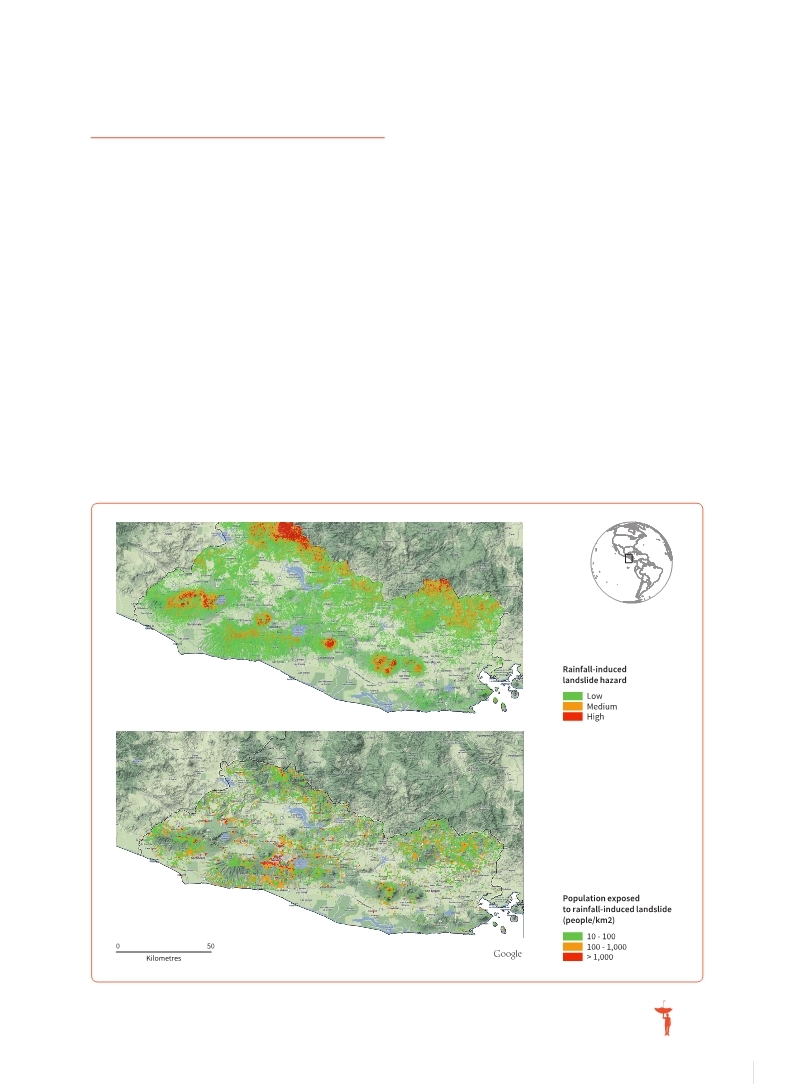 |
Global Assessment Report on Disaster Risk Reduction 2013
From Shared Risk to Shared Value: the Business Case for Disaster Risk Reduction |
 |
Global Assessment Report on Disaster Risk Reduction 2013
From Shared Risk to Shared Value: the Business Case for Disaster Risk Reduction |
|
|


|

71
4.2
Visualising the invisible
More than 50 countries are now recording local disaster losses, enabling them to visualize the real impact their society and economy is facing. This information is now available for governments, affected communities and businesses interested in investing in these markets.
Localised hazards can be modelled if the necessary data is available. For example, Figure 4.3 highlights the results of a study of landslide hazard in El Salvador.
However, given that extensive risks are characterised by short return periods, the analysis of historical loss data provides a valid approach to modelling
risk patterns and trends. It is still not possible to provide a global vision of extensive risk. Box 4.3, however, highlights that a growing number of countries are developing detailed disaster loss databases that allow extensive risks to be modelled.
For businesses and governments that want to know more about these risks, a complete analysis of extensive risk patterns and trends is provided in Annex 2. Analysis on the selected set of more than 270,000 records of disaster impacts from 56 countries confirms the trends and patterns previously identified in smaller subsets of 22 and 11 countries (UNISDR, 2011
UNISDR. 2011.,Global Assessment Report on Disaster Risk Reduction: Revealing Risk, Redefining Development., United Nations International Strategy for Disaster Reduction., Geneva,Switzerland: UNISDR.. . UNISDR. 2009.,Global Assessment Report on Disaster Risk Reduction: Risk and poverty in a changing climate., United Nations International Strategy for Disaster Reduction., Geneva,Switzerland: UNISDR.. . Table 4.1 shows that, although extensive disasters cause only 13 percent of total mortality, they are responsible for 42 percent of the total economic
(Source: UNISDR, adapted from
 NGI, 2013b NGI, 2013b NGI (Norvegian Technological Institute). 2013b.,Landslide Hazard and Risk Assessment in El Salvador., Background Paper prepared for the 2013 Global Assessment Report on Disaster Risk Reduction., Geneva,Switzerland: UNISDR.. NGI (Norvegian Technological Institute). 2013b.,Landslide Hazard and Risk Assessment in El Salvador., Background Paper prepared for the 2013 Global Assessment Report on Disaster Risk Reduction., Geneva,Switzerland: UNISDR.. Click here to view this GAR paper. Figure 4.3 Hazard (top) and exposure (bottom) to landslides induced by rainfall in El Salvador
|



 |
